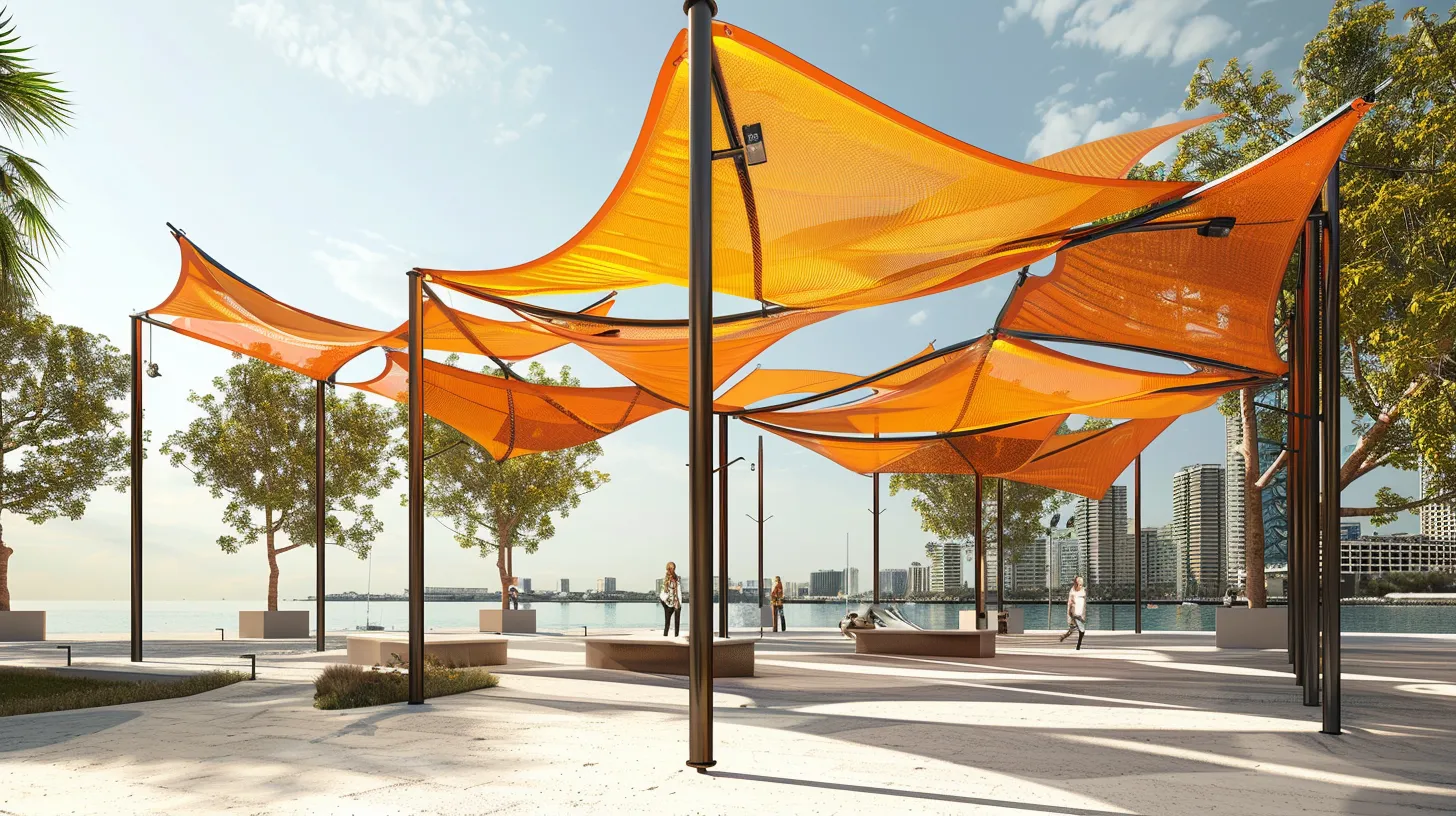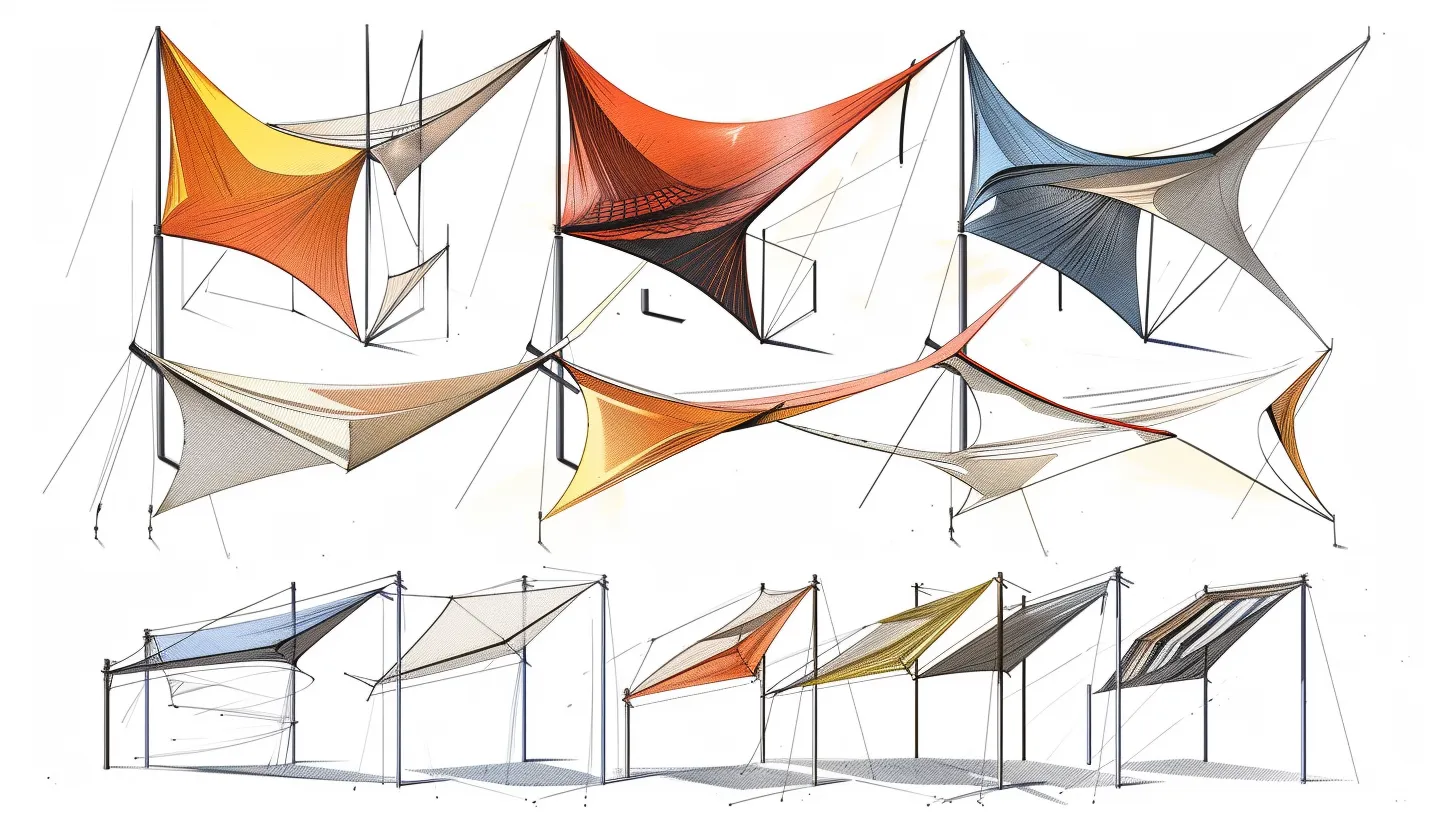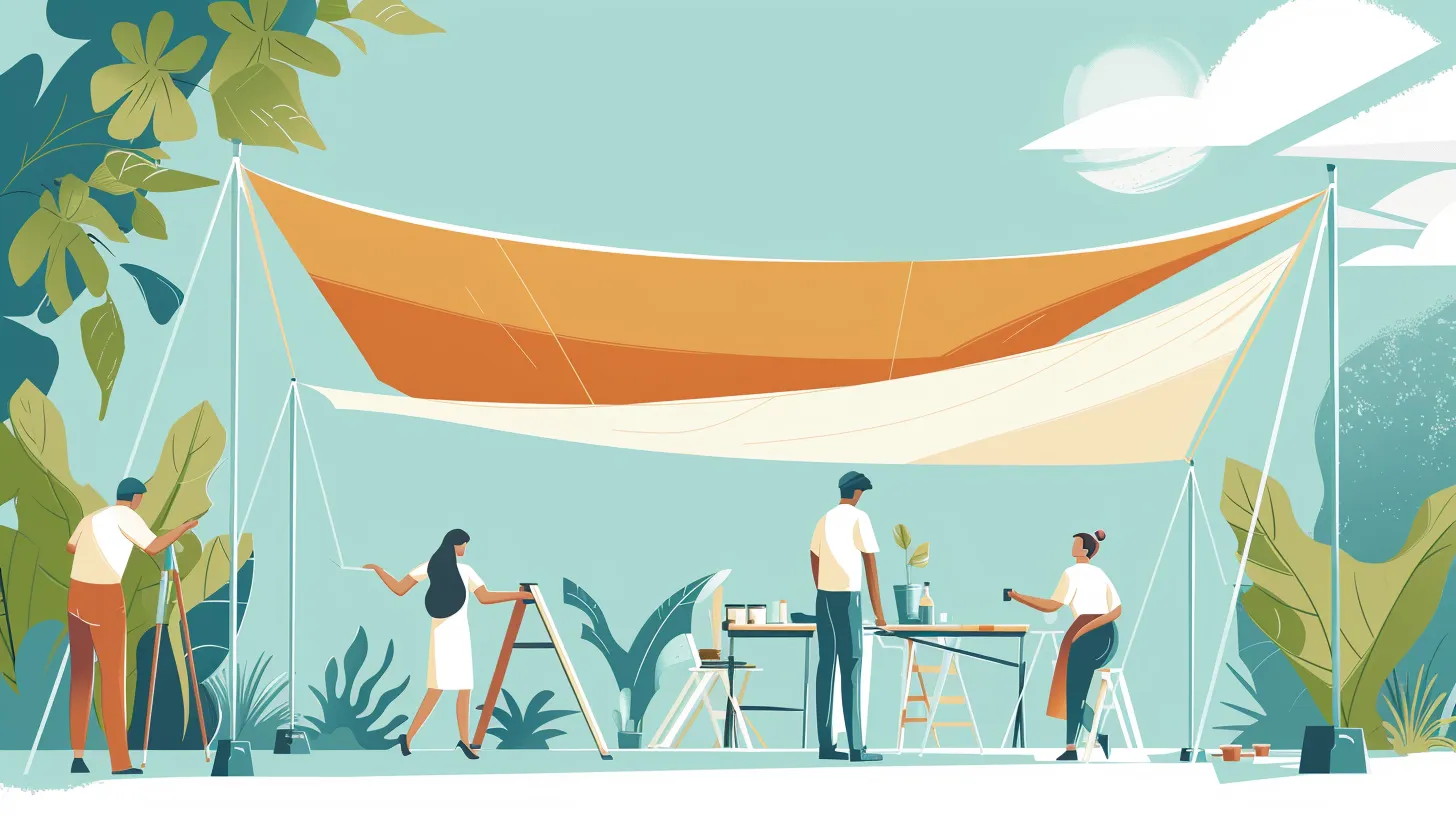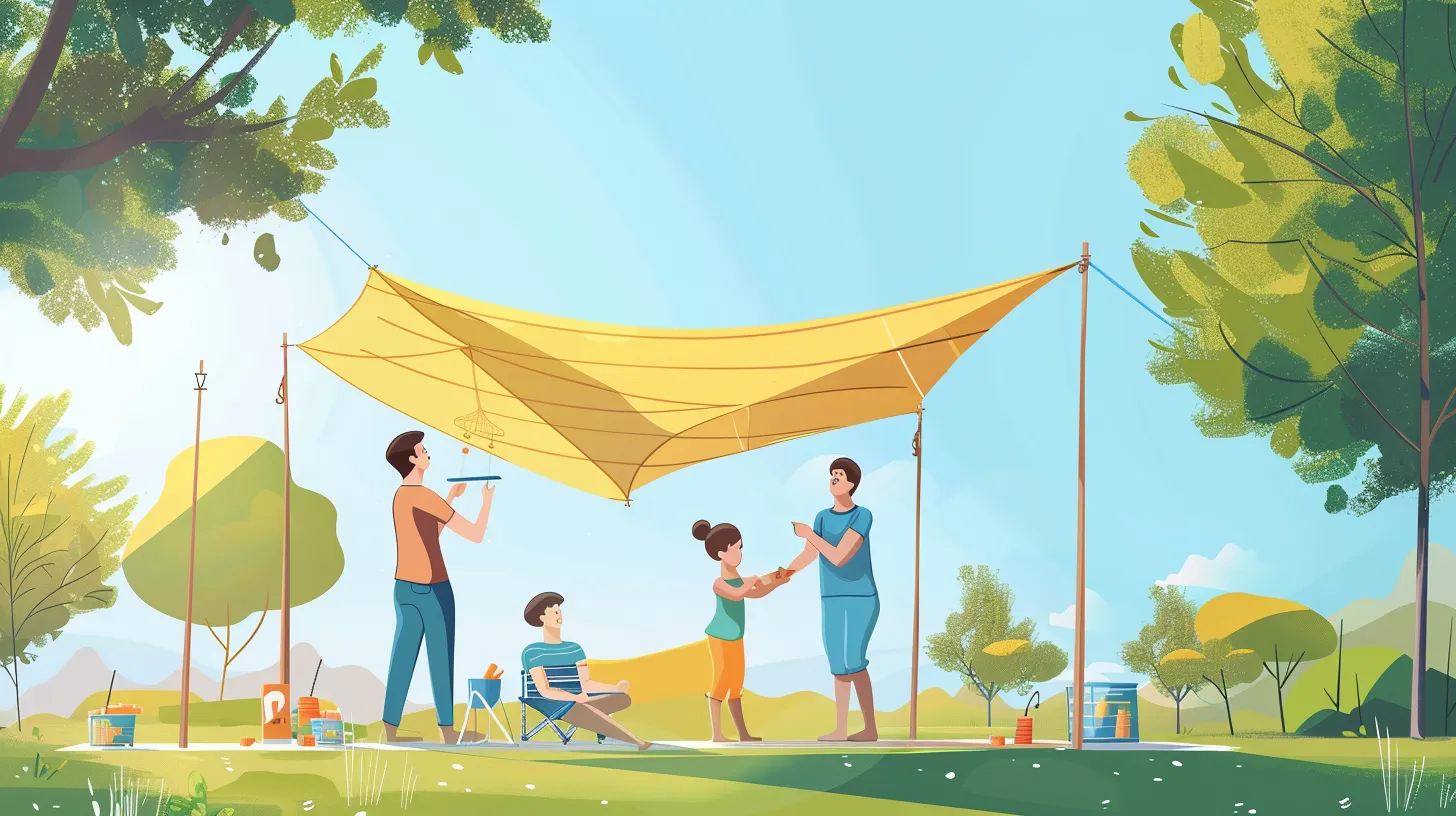Sun shade canopies have evolved from simple, natural shelters to sophisticated, engineered structures designed for excellent UV protection . Historically rooted in civilizations like the Egyptians and Greeks, today's canopies use advanced materials such as high-density polyethylene , reflective nylon, and aluminized mylar to effectively block harmful UV rays. These materials are chosen for their durability , UV resistance, and ability to withstand various weather conditions. Modern design considerations also include the right shape, size, and robust anchoring systems to enhance both functionality and aesthetics. Understanding these evolutionary advancements offers a deeper insight into creating safer and more effective outdoor living spaces.
Historical Development of Canopies

The historical development of canopies can be traced back to ancient civilizations , such as the Egyptians and Greeks, who initially utilized natural materials like leaves and branches for shade and shelter. These early structures were rudimentary, primarily serving to protect from the harsh sun while also defining outdoor spaces for social and religious gatherings. As societies evolved, so did the engineering and materials used in canopy construction, reflecting both technological advancements and changing needs.
The transition from natural to more engineered materials marked a significant evolution in the design of canopies, particularly with the introduction of sun shade sails . These modern canopies, while serving the ancient purpose of protection, now incorporate advanced UV protection , catering to the growing awareness of sun safety. The materials chosen are pivotal not only for their durability but also for their ability to block harmful UV rays, making them an essential component in the design of outdoor spaces.
Moreover, the engineering behind contemporary canopies integrates both function and aesthetics , ensuring that these structures not only provide essential sun protection but also enhance the visual appeal of the environments they occupy. This blend of utility and beauty underscores the sophisticated development that canopies have undergone from their humble beginnings to the present day.
Material Innovations and Choices

Innovations in materials for sun shade canopies have greatly enhanced their functionality and effectiveness in UV protection . Among these advancements, high-density polyethylene (HDPE) fabric stands out for its superior ability to shield against harmful ultraviolet rays, making it an ideal choice for enhancing outdoor living spaces.
Additionally, reflective nylon fabrics and metallic ripstop nylon have been developed to reflect heat, further optimizing the comfort and usability of areas exposed to intense sunlight.
Another notable material innovation involves the use of aluminized mylar , often paired with dark nylon . This combination not only protects from UV radiation but also absorbs heat, thereby maintaining a cooler environment under the canopy. This feature is particularly beneficial for locations that experience high temperature fluctuations.
Furthermore, lightweight silnylon fabric is gaining popularity in the design of sun shade canopies due to its durability and effective sunblocking properties . Its robustness makes it suitable for both temporary setups in personal outdoor spaces and more permanent installations in public or commercial settings. The incorporation of double layers of such fabrics substantially increases the UV protection offered, ensuring a safer and more comfortable outdoor living environment .
Design and Structural Considerations

Building on the advancements in canopy materials , it is equally important to consider the design and structural integrity of sun shade canopies to achieve peak functionality and aesthetic appeal. For those designing an outdoor area, selecting the right shape and size of the canopy is pivotal. It not only guarantees excellent sun protection but also enhances the overall aesthetics of the space. The design process should integrate weather-resistant materials that can withstand various climatic conditions, ensuring the canopy remains a long-lasting fixture.
Structural integrity is another critical aspect. This involves reinforced corners and a stable anchoring system that utilizes high-quality hardware for added stability. Such features prevent the canopy from succumbing to strong winds and harsh weather, thereby safeguarding the well-being of its users.
Furthermore, adherence to local building codes cannot be understated. These regulations are designed to make sure that all structural installations are safe and durable. Compliance with these codes during the design and planning phase promotes the longevity and safety of the canopy structures in diverse environments. This foundational work is essential before moving towards proper installation by professionals, which ensures these designs effectively meet intended functional and safety standards.
Installation Techniques and Tips

Proper installation of sun shade canopies is essential for ensuring their stability and longevity. It begins with selecting sturdy anchoring points and applying sufficient tension to prevent sagging and flapping. High-quality hardware is important in securing the canopy effectively against various weather conditions, which not only protects outdoor furniture but also blocks harmful UV rays . Adhering to engineering guidelines and local building codes during installation can prevent structural failures and guarantee a safe environment for Stylish Outdoor settings.
Moreover, installation isn't a set-and-forget task. Regular monitoring for signs of wear and tear is necessary to maintain the effectiveness and aesthetic appeal of the canopy. This includes checking connections and the fabric's condition, cleaning it with mild soap and water to remove dirt and debris, which could otherwise degrade the material prematurely. Opting for durable materials tailored to the intended use and specific local climate conditions will extend the life of the canopy, making it a lasting addition to any outdoor space. Seeking professional assistance for both assessment and installation can further enhance the safety and functionality of the sun shade canopy.
Usage and Maintenance Insights

After installing your sun shade canopy , maintaining its condition and functionality through regular care is essential. Regular cleaning using mild soap and water not only keeps your canopy looking fresh but also helps prolong its lifespan. For those with a small balcony, a sun shade made from high-density polyethylene (HDPE) fabric offers a stylish and comfortable retreat while ensuring high UV protection . This material blocks at least 90% of harmful UV rays, greatly reducing the risk of skin damage.
To further extend the durability of your sun shade, it's vital to make sure that it's properly anchored and tensioned . This prevents sagging and flapping, which can lead to premature wear and tear . Periodic checks for any signs of distress , particularly at the attachment points, will help in timely interventions that prevent larger issues. Additionally, applying a UV protective coating periodically can refresh the UV blocking capabilities of the HDPE fabric.
Lastly, considering the removal of the sun shade canopy during severe weather conditions can prevent damage. By following these maintenance tips, you not only secure a lasting shade solution but also create a stylish, safe, and comfortable outdoor space on your balcony.










